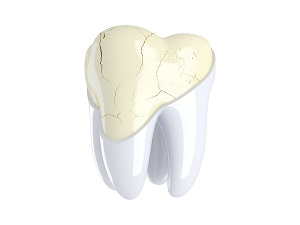
by Dr. Jacqueline S. Allen | Dec 28, 2016 | Blog, Endodontist
If you’ve received a referral to a Phoenix endodontist, you know that your general dentist wants your oral health issues to be assessed by a specialist. While the extra training and experience that an endodontist receives can reassure you that your teeth are receiving the best care possible, it also can be helpful to understand precisely how endodontists do their work. Here’s a brief look at how your Phoenix endodontist will work to save your smile and preserve your natural teeth whenever possible.
How Phoenix Endodontists Can Save Your Smile
 An endodontist can save teeth impacted by decay with several different procedures.You’ve probably heard about root canals and know that endodontists perform them to save natural teeth compromised by decay and/or infection. However, they also can perform a retreatment if a tooth treated by root canal shows signs of the infection returning; or they can treat a compromised tooth with an apicoectomy when infections persist in the bony area around the root of the tooth.
An endodontist can save teeth impacted by decay with several different procedures.You’ve probably heard about root canals and know that endodontists perform them to save natural teeth compromised by decay and/or infection. However, they also can perform a retreatment if a tooth treated by root canal shows signs of the infection returning; or they can treat a compromised tooth with an apicoectomy when infections persist in the bony area around the root of the tooth.
An endodontist can save teeth injured by trauma. Many patients are aware that root canal treatments are done by Phoenix endodontists when a tooth has become infected or suffers from decay; fewer are aware that endodontists are frequently recommended as the specialist to see when a natural tooth is cracked, chipped or even knocked out of one’s mouth! Damaged natural teeth often suffer disruption to their root canals, which opens up the possibility of the tooth pulp becoming infected. Endodontic treatment can ensure the tooth will be healthy enough to remain in the mouth.
An endodontist can save teeth with the use of cutting-edge technology. One of the reasons endodontists have become so successful in saving natural teeth is because improvements in materials and instruments used in endodontic treatments have revolutionized the field over the past 30 years. Today, endodontists are reviewing the use of lasers for more effective disinfection, computed tomography imaging (CBCT) to get a 3-D view of a patient’s tooth, and other technologies to make treatment of your natural teeth faster, safer, less painful and more effective than ever.
“Your Phoenix endodontist is an important ally in keeping your smile healthy and whole,” says Dr. Jacqueline S. Allen, who practices with the Phoenix Endodontic Group. “Our specialty has many ways to help you preserve your natural teeth for a lifetime!”

by Dr. Jacqueline S. Allen | Dec 7, 2016 | Blog, Cracked Teeth, Endodontics, Endodontist
 There are several different types of cracks that teeth can develop and they have a wide variety of symptoms. The most common symptom that you may have a tooth that is cracked is unpredictable pain with chewing especially with the release of the biting pressure. Some patients experience pain with hot or cold, while others may continue to only have occasional biting sensitivity. In many cases, the pain is very episodic and can refer to other areas of the mouth, which may make it difficult for the patient and the dentist, to determine which tooth is the source of the discomfort.
There are several different types of cracks that teeth can develop and they have a wide variety of symptoms. The most common symptom that you may have a tooth that is cracked is unpredictable pain with chewing especially with the release of the biting pressure. Some patients experience pain with hot or cold, while others may continue to only have occasional biting sensitivity. In many cases, the pain is very episodic and can refer to other areas of the mouth, which may make it difficult for the patient and the dentist, to determine which tooth is the source of the discomfort.
Because there are various types of cracked teeth and the severity of the crack determines which treatment is best for the patient.
- A cracked tooth implies that a crack in the hard, exterior portion of the tooth has extended internally. If the crack does not affect the pulp, then a crown will be needed to save the tooth. If the pulp is affected, then a root canal procedure and a crown will be necessary. If the crack extends past the pulp and into the root structure below the bone, then the tooth should, in most cases, be removed.
- A split tooth is often the result of a long-standing crack that was never treated and therefore creates distinct segments that can be separated. The tooth cannot be saved intact, but depending on the position of the crack, a portion of the tooth may be saved with a root canal procedure.
A vertical root fracture is one that starts in the root structure and extends toward the chewing surface. These teeth rarely show symptoms and therefore, can sometimes go unnoticed until the surrounding gum tissue and bone become infected. The majority of these teeth must be extracted due to the prolonged progression of disease by the time the issue is discovered.
A cracked tooth does not only affect the surface. Several layers of a tooth can be victims of the crack, depending on the size. Under the outer, hard, white layer of enamel, is a softer substance called dentin and inside of that, is the dental pulp, which contains the nerves and blood vessels and is what is removed during a root canal procedure. A cracked tooth is painful because when the outer hard tissues of the tooth are cracked, chewing on it can cause the pieces to move which can irritate the pulp. Eventually the repeated stress on the pulp will damage it irreparably. This will lead eventually to is death and infection to the tooth, and possibly the surrounding gum and bone.
Unfortunately, cracks in teeth do not heal; even when treated, they may continue to progress and separate, which may result in the loss of the tooth. Placing a crown on a cracked tooth is the best way to provide maximum protection, but is no guarantee that the treatment will be successful, long-term. However, once these teeth are treated properly and in a timely fashion, they can continue to function for a lifetime.
Cracking a tooth may not always be preventable, but there are some things that you can do to help make your teeth less susceptible to cracks.
- Avoid chewing on extremely hard objects, such as ice, popcorn kernels that are unpopped, hard candy or other extremely hard objects.
- Avoid clenching or grinding your teeth if you are aware.
- If you clench or grind your teeth at night when it is impossible to control, discuss a professional night guard or retainer with your dentist.
- Always wear a protective guard when engaging in contact sports.
The overall outcome for the tooth, and the type of treatment necessary to help save it, varies, depending on type, location and extent of the crack. If a patient is concerned that they may have a cracked tooth, it is imperative to see your endodontist (this is someone who specializes in saving cracked teeth) as soon as possible. The more time that passes without treatment, the greater the risk of the fracture growing in size and spreading into the root, which would necessitate an extraction of the tooth.

by Dr. Jacqueline S. Allen | Dec 5, 2016 | Blog, Endodontics, Endodontist, Phoenix Endodontic Group
 At Phoenix Endodontic Group, we believe that our staff is what makes our practice so special! As a part of our employee spotlight series, this month, we are highlighting the work of our C.E.O. and Operations Manager, Kevin Conroy!
At Phoenix Endodontic Group, we believe that our staff is what makes our practice so special! As a part of our employee spotlight series, this month, we are highlighting the work of our C.E.O. and Operations Manager, Kevin Conroy!
Q: Tell us a little about yourself—where are you from? Where did you get your degree?
A: I am originally from New York, but I have also lived in Virginia. I got my degree from James Madison University in Harrisonburg, Virginia.
Q: Have you always worked in the dental industry?
A: No, I used to be work for corporate finance at AT&T Capital and Wells Fargo financial leasing.
Q: How did you end up at Phoenix Endodontic Group?
A: My wife is Dr. Allen, and she wanted to grow the business, so I joined on. I serve as the C.E.O. and Operations Manager here at Phoenix Endodontic Group.
Q: What is your favorite part of working at Phoenix Endodontic Group?
A: No two days are ever the same here! I also love using state-of-the-art technology in order to deliver the very best services to our patients.
Q: What is a piece of advice you would offer to patients?
A: Don’t fear the endodontist! The process is not painful for most people.
Q: What is the most rewarding aspect of working at Phoenix Endodontic Group?
A: We treat our patients and referring offices the way we wish to be treated. We value integrity, honesty, and providing the finest endodontic care found anywhere.
Our team will restore your smile and heal you of pain. To learn more about our practice, or to schedule an appointment, call (602) 748-4190, or visit our website.

by Dr. Jacqueline S. Allen | Nov 14, 2016 | Blog, Root Canal
T here’s no reason to feel bad about being afraid of having a root canal treatment – but don’t let your fear stop you from doing something can be good for your health. More than half of Americans surveyed in 2014 said they were afraid of having a root canal performed, although more than three-quarters of those surveyed also said they wanted to preserve their natural teeth if at all possible – something that root canals have a very good track record of doing.
here’s no reason to feel bad about being afraid of having a root canal treatment – but don’t let your fear stop you from doing something can be good for your health. More than half of Americans surveyed in 2014 said they were afraid of having a root canal performed, although more than three-quarters of those surveyed also said they wanted to preserve their natural teeth if at all possible – something that root canals have a very good track record of doing.
Here are a few of the top fears that people express about having a root canal treatment, paired with facts and advice to lower your fear level.
Fears and facts about root canals
Fear #1: Root canals are extremely painful.
Fact: Root canals usually relieve pain rather than cause it. Your endodontist may prescribe antibiotics to reduce infection, and he or she will use a local anesthetic to ensure the area being worked on is completely numb. The procedure itself, since it cleans out the canal and replaces the pulp of the tooth with an artificial material, has almost no pain associated with it, and post-operative discomfort is usually mild and of short duration.
Fear #2: If I have a root canal done, it may fail and I’ll have to go through the entire process again.
Fact: Root canal treatments have success rates above 90 percent, and if an appropriate restoration (such as a crown) is placed on top of the affected tooth, it can save the natural tooth for years if not decades to come. If a root canal does fail, there are additional options, including root canal retreatments and apicoectomies, that are available for saving your natural tooth.
Fear #3: If I have a root canal, I may lose the tooth anyway and I’ll have wasted money on the treatment instead of just getting an extraction.
Fact: Nothing can replace your natural teeth, so it’s best if every effort is made to save them. If you were to opt for an extraction, you’d also need to budget for a dental implant, a bridge, or dentures, the cumulative cost of which could cost far more than a root canal.
“When you have a compromised tooth that needs attention, it’s best to have the facts and not let your fears dictate the sort of treatment you receive,” says Dr. Allen, who practices with the Phoenix Endodontic Group. “Root canals can be an affordable, comfortable and effective treatment for an injured or infected tooth.”
by Dr. Jacqueline S. Allen | Nov 7, 2016 | Blog, Dentistry
Many of the patients we see here at Phoenix Endodontic Group have some form of dental insurance coverage. These benefits can make affording needed treatment much more feasible for many of our patients. However, as a patient with insurance, it is important to understand that simply having coverage does not guarantee the specific services you need will be paid for or covered by your dental plan. Here at Phoenix Endodontic group, we cater to our patient’s specific oral health needs. We feel it is important our patients understand their individual needs sometimes do not fit within the constraints of plan used to cover an entire group.
Two of the most common misassumptions by patients regarding their dental insurance are first, that their dental insurance covers all dental procedures (codes) and secondly, their dental plan will cover the entire cost of a specific procedure or treatment. Most dental plans are contracted between a patient employer and an insurance company. This means the employer and the chosen insurance company agree upon what procedures will be covered and how much the plan will pay for these procedures. If you have questions about your plan or coverage, please contact your insurance company or employer.
It is possible that your dentist may recommend treatment that is not covered by your dental plan. Here at Phoenix Endodontic Group, we are healthcare providers first, and our patient’s oral health is our number one concern. Decisions made regarding treatment should be done with the advisement of your dentist, and not dictated by insurance.
Below are some key terms used when discussing dental insurance. Being familiar with these terms can help you better understand your coverage.
Plan Frequency Limitations
A dental plan may limit the amount of times it will pay for or cover a specific service. However, some patients may need a service more often than others to maintain oral health. For example a plan may only pay for two exams per year. A patient may have already used those exams with their general dentist and may not have coverage for a third exam when they see a specialist (for example an Endodontist). Patients should make treatment decisions based on what is best for their health, and not allow treatment decisions be dictated by their insurance.
Coordination of Benefits (COB) or Non Duplication of Benefits
These terms are applicable to patients with dual coverage, or are covered by more than one dental plan. The sum of benefits paid from all insurance plans should not be more than the total charges for service rendered. Although a patient is covered by two or plans, this does not guarantee that all the plans will pay for services rendered. Sometimes, none of the plans will pay for treatment needed. Each insurance company handles COB in a specific way and it is important you check with your plan for details.
Not Dentally Necessary
Most dental insurance plans sat they will only cover procedures considered to be medically or dentally necessary. However if the claim is denied for this reason it does not mean the services were not necessary. If you plan rejects a claim because a service was not deemed not “dentally necessary” you can file an appeal. Remember treatment decisions should be made by yourself and your dentist.

by Dr. Jacqueline S. Allen | Oct 31, 2016 | Blog, Dentistry
 Having dental insurance or a dental benefit plan can make affording needed dental care much easier. However, most dental benefit plans do not cover all necessary dental procedures. It is important for patients to understand their dental plans, and covered benefits are not designed around what treatment their dentist recommends or what services that specific patient needs. An individual’s coverage is based on how much their employer pays into the plan. When considering dental treatment, insurance coverage and dental benefits should not be the only consideration. Treatment should be determined by the patient, their dentist, and the patient’s specific dental needs.
Having dental insurance or a dental benefit plan can make affording needed dental care much easier. However, most dental benefit plans do not cover all necessary dental procedures. It is important for patients to understand their dental plans, and covered benefits are not designed around what treatment their dentist recommends or what services that specific patient needs. An individual’s coverage is based on how much their employer pays into the plan. When considering dental treatment, insurance coverage and dental benefits should not be the only consideration. Treatment should be determined by the patient, their dentist, and the patient’s specific dental needs.
How Dental Plans Work
Most commonly, dental plans are a contract between your employer and an insurance company. The chosen insurance company and employer agree on the amount your plan will pay and what procedures are covered. Often, you may have dental care needs not covered by your plan. Covered services are based on the dental plan you have.
Being a healthcare provider first and foremost, your dentist’s top priority is your oral health and aiding you in taking care of your teeth. Our office will file claims to your dental plan as a courtesy to you. The amount of the bill for whatever reason not covered by insurance is your responsibility.
To help you understand your coverage and benefits listed are some key terms used when discussing the features of a dental benefit plan.
Annual Maximums
This is the largest dollar amount a dental plan will pay during the year. You are expected to pay any costs higher than the annual maximum as well as any copayments. Most dental plans run on a calendar year (Jan-December) and benefits renew January 1st. However some plans run on a benefit year and the dates of benefit renewal vary. It is important to check with your insurance company to see when your benefits renew. It is also important to know that annual maximums are not always updated to keep up with costs of dental treatment. If you feel your annual maximum is too low please consult your employer and or dental insurance company.
UCR (Usual, Customary, and Reasonable) Charges
UCRs are the maximum allowable amount that will be covered by your plan for a specific service/s. The term UCR makes it sound as if this is the standard rate for dental care, however it is not and the use of these terms can be very misleading. First, insurance companies determine the charges for UCR’s and can pick whatever amount they want. The amount they choose often does not coincide with what actual dentists in the area charge for specific procedures. Secondly, UCR rates may stay the same for years, meaning they do not have to keep up with things like inflation or be reflective of actual costs of dental treatment. Lastly, insurance companies do not have to explain how they set their UCRs and the formula used by each company varies. If your bill is larger than the UCR set by your insurance plan it does not mean your provider has overcharged you.
Preferred Providers
Your insurance plan may want you to seek treatment from a provider in its preferred network. The term preferred means these dentists are contracted with the insurance plan. It does not mean these are providers the patient prefers.
Pre-Existing Condition
Some dental plans do not cover conditions that existed prior to the patient being enrolled. For example, your insurance may not cover benefits for replacing a missing tooth if the tooth was gone before the effective coverage date. Despite your plan not paying for specific conditions, you may still need treatment to maintain optimum oral health.
Unfortunately many patients make decisions about their dental care solely based on their insurance coverage. When making decisions about your dental care it is crucial to remember your health is priority number one. Work with your dentist so your teeth with last a lifetime.
Two of the most common misassumptions by patients is first, that their dental insurance covers all dental procedures (codes) and secondly that their dental plan will cover the entire cost of a specific procedure or treatment.

 An endodontist can save teeth impacted by decay with several different procedures.You’ve probably heard about root canals and know that endodontists perform them to save natural teeth compromised by decay and/or infection. However, they also can perform a retreatment if a tooth treated by root canal shows signs of the infection returning; or they can treat a compromised tooth with an apicoectomy when infections persist in the bony area around the root of the tooth.
An endodontist can save teeth impacted by decay with several different procedures.You’ve probably heard about root canals and know that endodontists perform them to save natural teeth compromised by decay and/or infection. However, they also can perform a retreatment if a tooth treated by root canal shows signs of the infection returning; or they can treat a compromised tooth with an apicoectomy when infections persist in the bony area around the root of the tooth.


 At Phoenix Endodontic Group, we believe that our staff is what makes our practice so special! As a part of our employee spotlight series, this month, we are highlighting the work of our C.E.O. and Operations Manager, Kevin Conroy!
At Phoenix Endodontic Group, we believe that our staff is what makes our practice so special! As a part of our employee spotlight series, this month, we are highlighting the work of our C.E.O. and Operations Manager, Kevin Conroy!
 here’s no reason to feel bad about being afraid of having a root canal treatment – but don’t let your fear stop you from doing something can be good for your health.
here’s no reason to feel bad about being afraid of having a root canal treatment – but don’t let your fear stop you from doing something can be good for your health. 
 Having dental insurance or a dental benefit plan can make affording needed dental care much easier. However, most dental benefit plans do not cover all necessary dental procedures. It is important for patients to understand their dental plans, and covered benefits are not designed around what treatment their dentist recommends or what services that specific patient needs. An individual’s coverage is based on how much their employer pays into the plan. When considering dental treatment, insurance coverage and dental benefits should not be the only consideration. Treatment should be determined by the patient, their dentist, and the patient’s specific dental needs.
Having dental insurance or a dental benefit plan can make affording needed dental care much easier. However, most dental benefit plans do not cover all necessary dental procedures. It is important for patients to understand their dental plans, and covered benefits are not designed around what treatment their dentist recommends or what services that specific patient needs. An individual’s coverage is based on how much their employer pays into the plan. When considering dental treatment, insurance coverage and dental benefits should not be the only consideration. Treatment should be determined by the patient, their dentist, and the patient’s specific dental needs.